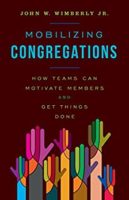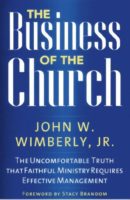As an advocate for using teams to carry out the work of a congregation and for eliminating as many committees as possible, I often get phone calls like this: “John, we read your book and decided to move from a committee-driven to a team-driven organization. But it hasn’t gone smoothly!” If I or other advocates of teams created the impression that moving to teams is an easy transition, I apologize.
The change to teams is not easy, but it’s necessary. It’s not easy because congregations have relied on committees increasingly for a century or more. Long-time members are invested in the committee’s continued existence. Staff members who don’t understand their new relationship to teams, and instead continue their less-than-clear relationship they have had with committees.
The change to teams is necessary because teams are more flexible than committees for getting work done. They need fewer people to do the work (teams can usually be 3–7 people). Teams demand less time for staff to manage, and are younger generations’ preferred way of carrying out assignments.
Watching some congregations successfully move to a team-driven ministry while others struggle, I have reached several conclusions about how to make the process as smooth as any change process in a congregation can be:
- Education. Polity is deeply rooted in the culture of congregations and denominations. Culture change requires a lot of education and discussion. Before and while moving to teams, I suggest congregations engage in a significant study of how teams are used in other organizations: business, the military, non-profits, congregations, etc.
The nursing profession is a leader in producing practical literature about how to organize and participate in teams. The education process should extend beyond the leadership core to the general membership of the congregation. Unless the entire congregation is aware of the reasons for moving to teams, there will be continual and debilitating second-guessing about why it is happening. - Training. Many, if not most, congregational members are already working in teams in their workplaces and community groups. However, they are not used to using teams in a congregation. Team members must be given basic information about how successful teams function in a congregation.
For example, people sometimes think email and texting can replace face-to-face communication in teams. In fact, they don’t. Harvard researchers found a 35% variance in the performance of teams based on the number of face-to-face interactions among team members. The more live interaction, the better the performance.
Another myth holds that teams depend mainly on high-powered leaders. In fact, effective teams need all team members to participate fully.
Finally, team members need to know where to turn when they hit problems. They need a coach who can help them troubleshoot at key moments. The coach might be a paid staff member or a lay person who is skilled at working with teams. - Generational Issues. As a Baby Boomer, I am quite comfortable saying that my generation is part of the problem in making the transition to teams. Boomers have used congregational committees for our entire lives to achieve our goals. We know how committees work and how they can help us get what we want. Giving up a committee-driven polity puts us in a strange new land—just as many of us are entering an even stranger new land called retirement.
Strangeness creates anxiety which, in turn, leads to resistance. But most Boomers have also learned to work in teams in business, government, the military or non-profits. It is important to remind boomers that we are not unfamiliar with teams. We just haven’t used them in congregations. Millennials and Gen Xers tend to have much more dexterity when it comes to working in teams, and greater willingness to move to a team-driven approach. As they develop teams, Congregations may need to place younger folks in charge of coaching. - Acknowledging Work Done. Committees have served many congregations well for decades. As they are replaced by teams, it is important to have moments in worship where the work of soon-to-be-defunct teams are lifted up in gratitude to God. It is especially important to recognize long-term members and leaders of committees, who have faithfully attended meetings and carried out their responsibilities.
Even when following these four recommendations, there will be bumps in the road that leads congregations from committees to teams. Change is difficult. This transition won’t be easy, but it is necessary. It will lead to higher performing congregations and less drain on the precious time of our volunteering members.
John Wimberly is an experienced pastor and consultant. As a consultant, he has worked with congregations and judicatories on strategic planning, staff designs for the 21st century, and congregational growth as well as financial and administrative management. He has MBA, MDiv, and PhD (theology) degrees. His books focus on effective management and leadership. John believes congregations can have a bright future!




